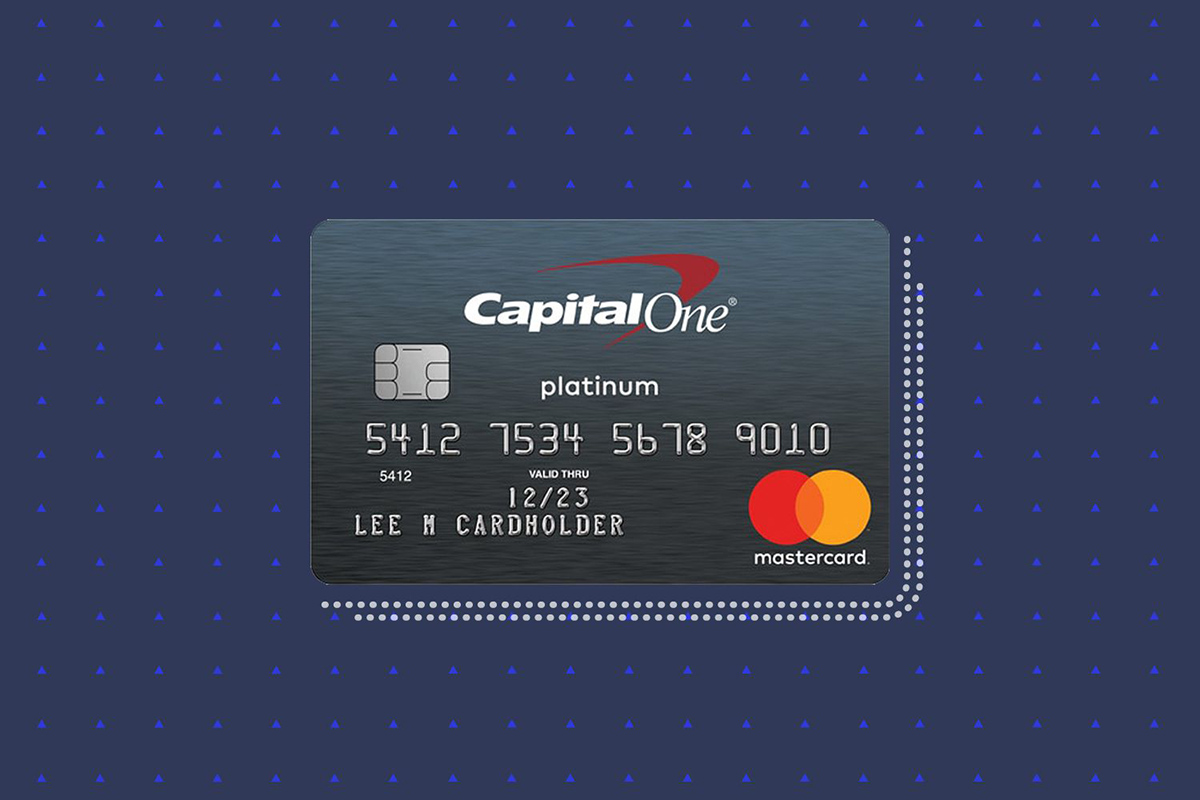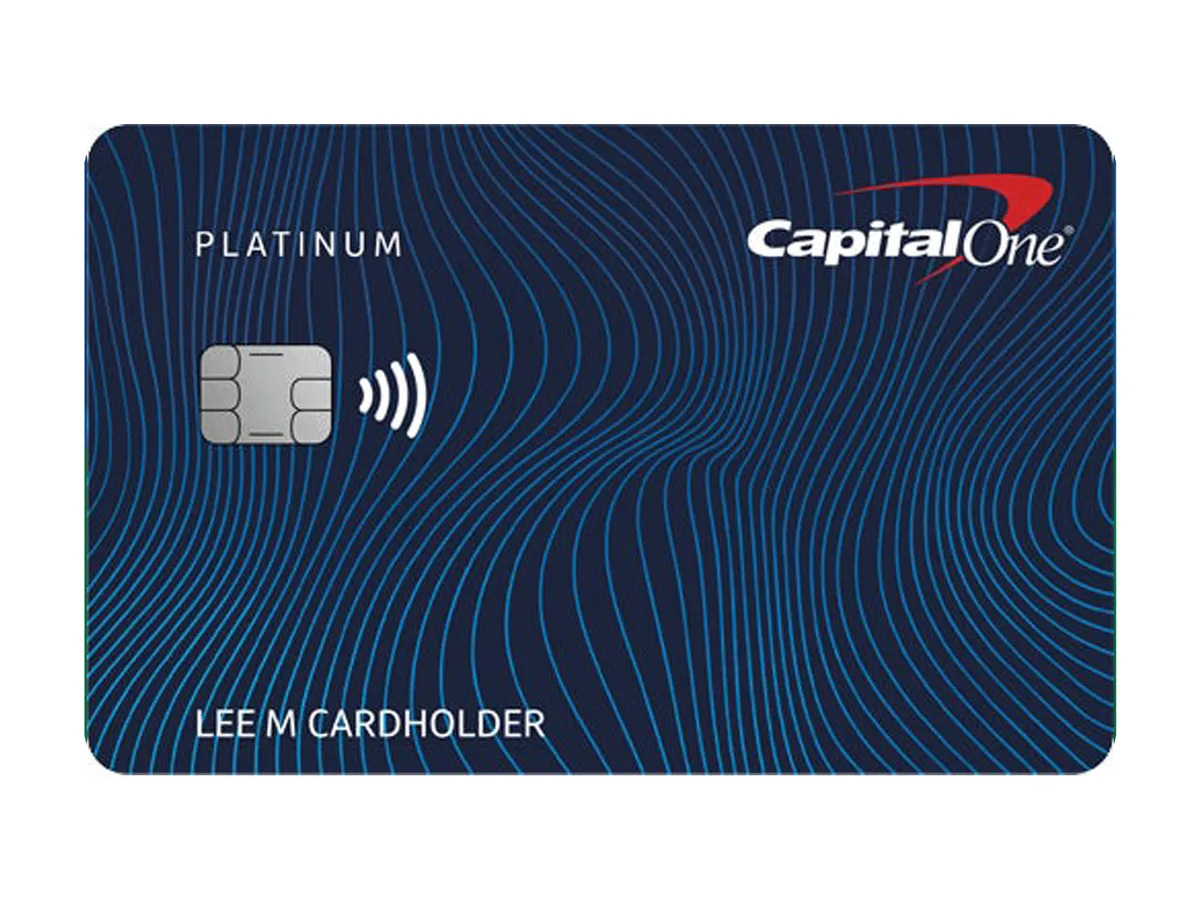Home>Finance>What Is The Credit Limit On Capital One Quicksilver Card


Finance
What Is The Credit Limit On Capital One Quicksilver Card
Published: March 5, 2024
Learn about the credit limit on Capital One Quicksilver Card and how it can impact your finances. Find out how to manage your credit limit effectively. Gain insights into maximizing your financial opportunities.
(Many of the links in this article redirect to a specific reviewed product. Your purchase of these products through affiliate links helps to generate commission for LiveWell, at no extra cost. Learn more)
Table of Contents
Introduction
Understanding Credit Limits
When it comes to managing your finances, understanding credit limits is crucial. A credit limit is the maximum amount of money a financial institution, such as a bank or credit card issuer, is willing to extend to you as a line of credit. This limit is determined based on various factors, including your credit history, income, and overall creditworthiness. Essentially, it represents the highest balance you can carry on your credit card at any given time.
Having a clear grasp of your credit limit is essential for responsible financial management. It not only dictates your purchasing power but also plays a significant role in determining your credit score. By staying within your credit limit and making timely payments, you can demonstrate financial discipline and improve your creditworthiness over time.
Understanding the nuances of credit limits empowers individuals to make informed decisions about their spending and borrowing habits. Moreover, it sheds light on the factors that influence credit limits, offering insights into how financial institutions evaluate an individual’s creditworthiness.
Understanding Credit Limits
Credit limits are a fundamental aspect of the financial landscape, shaping the way individuals utilize credit cards and manage their spending. These limits are established by financial institutions and represent the maximum amount of money that cardholders can borrow. While credit limits vary based on factors such as credit history, income, and overall creditworthiness, they serve as a crucial parameter for responsible financial management.
For cardholders, staying mindful of their credit limits is essential to avoid overspending and incurring debt beyond their means. Exceeding the credit limit can lead to penalty fees, increased interest rates, and a negative impact on credit scores. Therefore, understanding the significance of credit limits and adhering to them is pivotal for maintaining healthy financial habits.
Furthermore, credit limits play a pivotal role in shaping an individual’s credit utilization ratio, which is a key factor in determining credit scores. This ratio reflects the amount of credit being used relative to the total available credit, and maintaining a low utilization ratio can positively influence credit scores. By comprehending the impact of credit limits on credit utilization, individuals can strategically manage their spending to optimize their credit profiles.
Overall, understanding credit limits empowers individuals to make informed decisions about their financial behaviors, fostering responsible credit card usage and contributing to long-term financial well-being. By recognizing the role that credit limits play in shaping financial outcomes, individuals can navigate the world of credit with prudence and foresight.
Credit Limit on Capital One Quicksilver Card
The Capital One Quicksilver Card is a popular choice among consumers seeking a straightforward and rewarding credit card option. When it comes to the credit limit offered on the Capital One Quicksilver Card, it is important to note that the specific limit extended to cardholders can vary based on individual circumstances. Capital One evaluates several factors when determining the credit limit for each applicant, including their credit history, income, and overall creditworthiness.
While there is no publicly disclosed minimum or maximum credit limit for the Capital One Quicksilver Card, the limit extended to cardholders is influenced by their financial profile. For individuals with excellent credit scores and strong credit histories, the credit limit offered on the Quicksilver Card can be substantial, enabling them to make significant purchases and enjoy the card’s cash back rewards with confidence.
It’s important to recognize that the credit limit initially offered on the Capital One Quicksilver Card may not be fixed indefinitely. As cardholders demonstrate responsible credit usage, make timely payments, and exhibit financial stability, they may become eligible for credit limit increases over time. This flexibility allows cardholders to potentially access higher credit limits as their financial standing improves, providing greater purchasing power and financial flexibility.
Ultimately, the credit limit on the Capital One Quicksilver Card is tailored to each cardholder’s unique financial circumstances, reflecting Capital One’s commitment to providing personalized credit solutions. By understanding the factors that influence credit limits and maintaining healthy financial habits, cardholders can maximize the benefits of their Quicksilver Card while effectively managing their credit limits.
Factors Affecting Credit Limit
When it comes to determining the credit limit on a credit card, including the Capital One Quicksilver Card, several key factors come into play. Understanding these factors can provide valuable insights into the dynamics that influence the credit limits extended to cardholders.
- Credit History: One of the primary determinants of a credit limit is an individual’s credit history. Lenders assess an applicant’s credit report to gauge their track record of managing credit and debt. A strong credit history, characterized by timely payments, low credit utilization, and a limited history of delinquencies, can positively influence the credit limit offered on a credit card.
- Income: A cardholder’s income level is another pivotal factor in determining their credit limit. Lenders evaluate an individual’s income to assess their capacity to manage credit and repay debts. Higher income levels may result in a more substantial credit limit, as they signify greater financial stability and the ability to handle larger credit lines.
- Credit Utilization Ratio: The credit utilization ratio, which reflects the amount of credit being used relative to the total available credit, plays a significant role in credit limit decisions. Individuals with lower utilization ratios are often viewed favorably by lenders, as it indicates responsible credit management and a reduced risk of overextending credit lines.
- Creditworthiness: Overall creditworthiness encompasses various factors, including credit history, income, employment status, and debt-to-income ratio. Lenders consider these elements to assess an individual’s likelihood of repaying debts and managing credit responsibly, thereby influencing the credit limit offered on a credit card.
- Payment History: A consistent record of making on-time payments on existing credit accounts can positively impact the credit limit extended to an individual. Timely payments demonstrate financial reliability and responsible credit management, signaling to lenders that the individual is a low-risk borrower.
By comprehending the interplay of these factors, individuals can gain a deeper understanding of the elements that shape credit limit determinations. Moreover, maintaining a strong credit profile, demonstrating responsible financial behaviors, and staying mindful of these influencing factors can empower individuals to effectively manage their credit limits and access favorable credit terms.
How to Increase Your Credit Limit
Increasing your credit limit can provide greater financial flexibility and enhance your purchasing power, but it requires a strategic approach and a demonstrated track record of responsible credit management. Here are key steps to consider when seeking to increase your credit limit:
- Monitor Your Credit Score: Regularly monitoring your credit score allows you to stay informed about your credit standing. A strong credit score is often a prerequisite for qualifying for a credit limit increase, so maintaining healthy credit habits is essential.
- Request a Credit Limit Increase: Many credit card issuers, including Capital One, allow cardholders to request a credit limit increase. This typically involves submitting a request through the issuer’s online portal or contacting customer service. When making this request, highlighting your positive payment history and improved financial circumstances can bolster your case for a higher credit limit.
- Update Your Income Information: Providing updated income information to your credit card issuer can potentially result in a higher credit limit. If your income has increased since you initially obtained the card, sharing this information with the issuer demonstrates improved financial capacity and responsible credit management.
- Manage Your Credit Utilization: Keeping your credit utilization ratio low by using only a small portion of your available credit can signal responsible credit usage. Lenders often favor individuals with low utilization ratios, which can positively influence credit limit increase decisions.
- Regularly Review Your Account: Consistently reviewing your credit card account and maintaining a positive payment history can position you favorably for a credit limit increase. Responsible financial behaviors, such as making on-time payments and staying within your current credit limit, demonstrate creditworthiness and financial prudence.
- Consider Multiple Factors: When seeking a credit limit increase, it’s important to consider various factors that can influence the decision, including your credit history, income, and overall financial stability. By presenting a comprehensive picture of your creditworthiness, you can strengthen your case for a higher credit limit.
It’s important to note that while seeking a credit limit increase can offer advantages, it should be approached with careful consideration of your financial circumstances and the potential impact on your credit profile. Responsible credit management, coupled with a strategic approach to requesting a credit limit increase, can pave the way for enhanced financial flexibility and improved credit terms.
Conclusion
Understanding credit limits and their implications is paramount for individuals navigating the realm of personal finance and credit management. Whether considering the credit limit on a specific credit card, such as the Capital One Quicksilver Card, or seeking to increase one’s credit limit, a holistic comprehension of the factors at play is instrumental in making informed financial decisions.
By recognizing the multifaceted nature of credit limits and the diverse factors that influence them, individuals can proactively manage their credit profiles and make strategic choices to optimize their financial well-being. From maintaining a healthy credit score and prudent credit utilization to demonstrating responsible financial behaviors, the path to maximizing credit limits entails a blend of financial acumen and disciplined credit management.
Moreover, the potential for credit limit increases underscores the dynamic nature of credit management, offering opportunities for individuals to expand their financial horizons as their creditworthiness evolves. With vigilance, strategic planning, and a commitment to financial responsibility, individuals can position themselves for favorable credit terms and enhanced purchasing power.
Ultimately, the journey toward understanding and leveraging credit limits is a testament to the proactive role individuals can play in shaping their financial destinies. By embracing financial literacy, staying attuned to credit management best practices, and leveraging insights into credit limit dynamics, individuals can navigate the credit landscape with confidence and prudence, unlocking the potential for long-term financial success.














